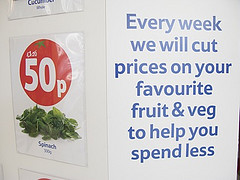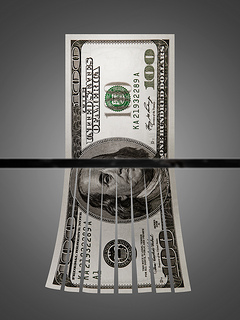 Across the world things are tough for companies, and those in the consumer goods industry are no exceptions. Each piece of good news on the economy seems to be accompanied with ten pieces of bad news: the economy is tough; shoppers are being more choosy, and are willing to sniff out a bargain – yet both manufacturers and retailers have sales targets to hit. What to do if you have to hit your targets and want to drive profits?
Across the world things are tough for companies, and those in the consumer goods industry are no exceptions. Each piece of good news on the economy seems to be accompanied with ten pieces of bad news: the economy is tough; shoppers are being more choosy, and are willing to sniff out a bargain – yet both manufacturers and retailers have sales targets to hit. What to do if you have to hit your targets and want to drive profits?
It appears that the in the vast majority of cases the answer is to increase the number of promotions. Whilst dining with a retailer friend of mine recently, he suggested that promotional intensity was at an all-time high, with some chains in some stores having over 40% of their range on promotion at any time. This responds to the deal hungry shopper, but what does it do to the shoppers who are not deal obsessed, and what does it do to profits?
Profit slipping away
The answer to the second question is pretty straight forward. Whilst Toby Desforges and I were researching “The Shopper Marketing Revolution” we spoke with Chris Hoyt, of Hoyt & Company, who told us that from their research in the US, the average trade promotions ROI is typically between 55% and 75% marketing – for every dollar spent the manufacturer might get back as little as 55 cents, losing 45 cents in the process. This backs up analyses that we have seen from CAS (the trade promotions experts now owned by Accenture) which suggest that 70 percent of promotions lose money for manufacturers, and extensive data that we have seen from our work in Asia.
Destroying value from loyal shoppers
Most promotional evaluations only actually look at what is sold – so are often merely a calculation as to whether there was enough additional sales value to cover the cost of the discount. But it doesn’t really account for who actually buys, and what they do with the product after they buy it. In every category some promoted goods will be bought by someone who would have bought the brand anyway; or who brings forward a future sale because of the deal. Unless they consume more as a result of buying more, then this is just lost money. In categories with inelastic consumption this is often the case (when you buy extra laundry detergent do you wash your clothes more frequently? No I thought not!) In some categories we’ve seen “loyal shoppers” buy five months’ supply in one go as it’s on a deal – but as they don’t use any more, then they end up not buying again for five months!
Brand value eroding
And what of the impact in the long term? Over time shoppers who believed the brand was worth one price, now start believing it is worth another price. They wait for promotions, as they now have recalibrated the value of the brand. It seems crazy for brands to be simultaneously spending millions to build brand equity with consumers, when at the same time spending money to lose brand equity with shoppers.
There are plenty of other negative factors relating to promotions (the fact that they are often the cause of out of stocks, which again prevents loyal shoppers buying the product at full price); but even these are enough to suggest that the estimates of the negative value of promotions are fair, or even generous – the true cost of promotions may well be significantly higher.
But for marketers who have targets to hit, promotions may be seen as a necessary evil: how then to address the problem, without losing all of those sales uplifts that are deemed as essential to the brands success?
Getting out of the promotions money pit
Measure:
Not all promotions are bad, and some are worse than others. Begin evaluating promotions, and work out which ones are good for business, which are OK, which are not OK and which are really poison. Stop taking the poison, and replace with more of the good stuff.
Don’t go cold turkey
Even if your boss would let you, stopping is a bad idea. Your customers won’t like it, and your shoppers will get confused, and that might cause problems. Most manufacturers have been killing themselves slowly with promotions for years, so a few more years won’t hurt. Start gently, by reducing the intensity, reducing the depth of deals or the duration of the deals. Identify the worst offending promotions and stop those. If 70% of promotions lose money we don’t have to move to zero overnight, but if we were to nudge towards 60% that might make a huge difference.
Take alternatives to retailers
Retailers are suspicious folks and when a supplier wants to stop something, they get worried about their profits, and the funding (end caps, mailers) that is associated with the activity. Go to retailers with alternatives which maintain investment levels in the first instance. Once we prove our activity works, these things can be re-negotiated later.
Whatever you do, do something. The pressure isn’t going to stop soon, and more promotions, at some point (if it hasn’t happened already) just won’t work anymore. There is only so much stuff that people can buy. There is only so long that prices can be cut deeper. Something will one day give. Wouldn’t it be good to be half-way out of the hole when it begins to cave in?




